Anyone who has ever attended a Persian wedding has seen the beautiful details and opulence that goes into the décor and vision. These ceremonies are planned very carefully, and although couples who are getting married now may be very different than couples were hundreds of years ago, it is still very important to most of them to honor tradition by staying true to the cultural Persian wedding ceremony.
Because of this, the actual Persian wedding ceremony has remained basically the same over the centuries. This ceremony is made up of two parts: the Aghd ceremony and the reception.
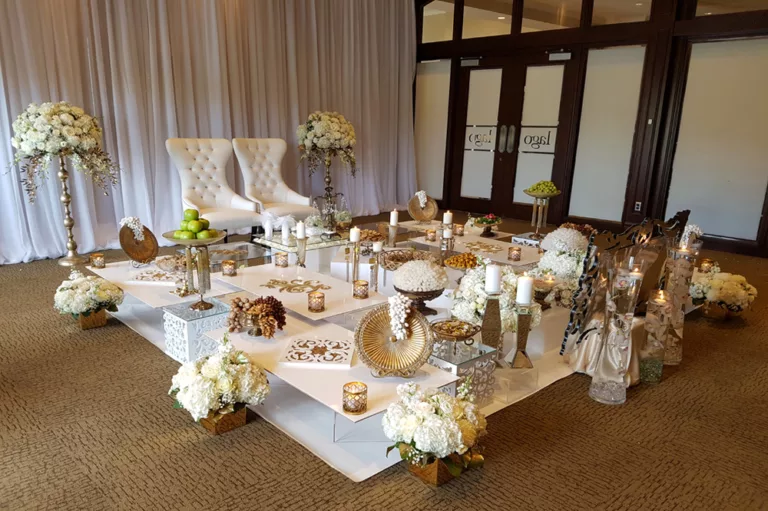
The Aghd ceremony is the legal part of the ceremony, where the couple is officially united in marriage under law. This part of their wedding includes one of the most beautiful elements of the Persian culture: the Sofreh Aghd.
The Sofreh Aghd is a spread of items chosen to symbolize a lasting and loving life for the couple, and each of the lovely items represent different things to bless the marriage.
Sofreh Aghd Items
The Mirror
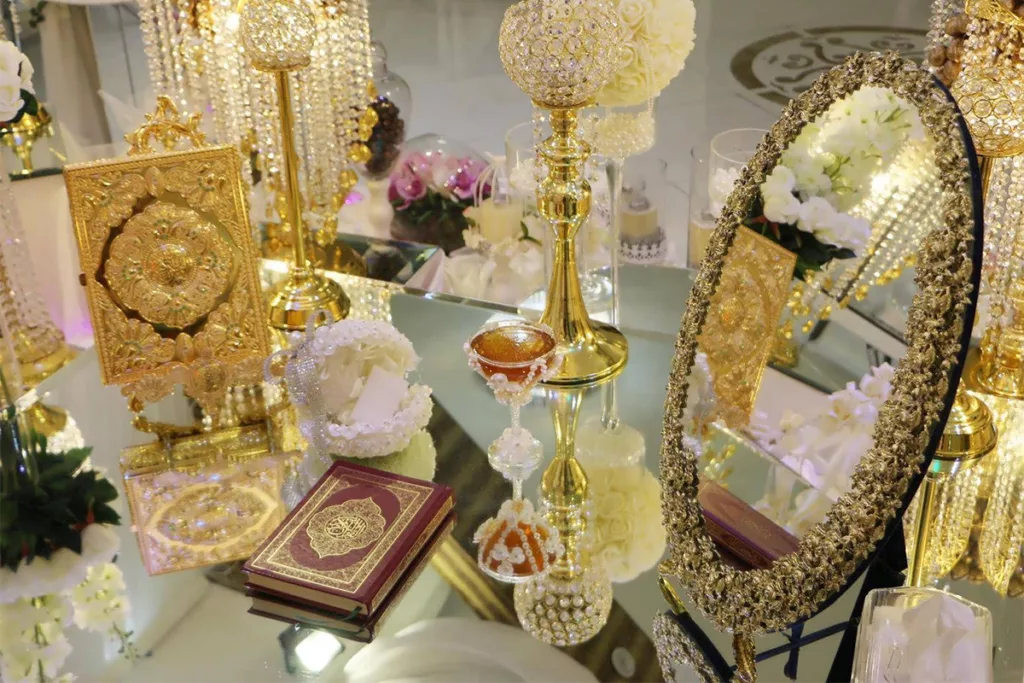
A Cup of Honey
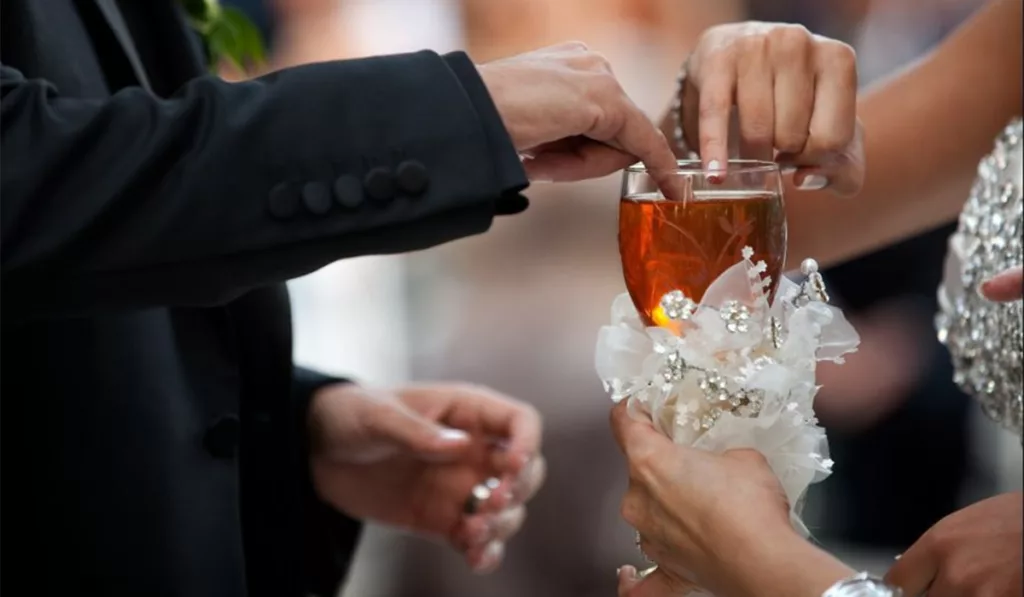
One of the most beloved parts of the Sofreh Aghd is the honey exchange. The bride and groom dip their pinky fingers in the honey and place them in one another’s mouth. This is done to sweeten their lives
Decorated Flatbread
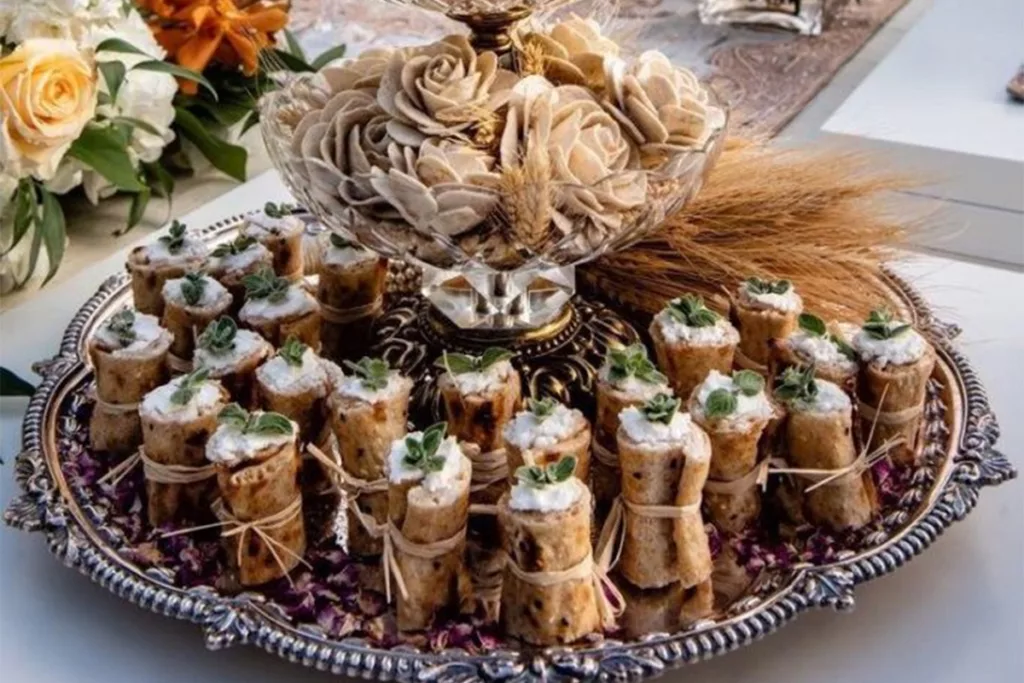
The “bread of life”, or Naan-e Sangak, is beautifully decorated flatbread that symbolizes good health and prosperity for the couple. It typically includes words and phrases of congratulations, written in cinnamon or saffron.
Sugar Cones
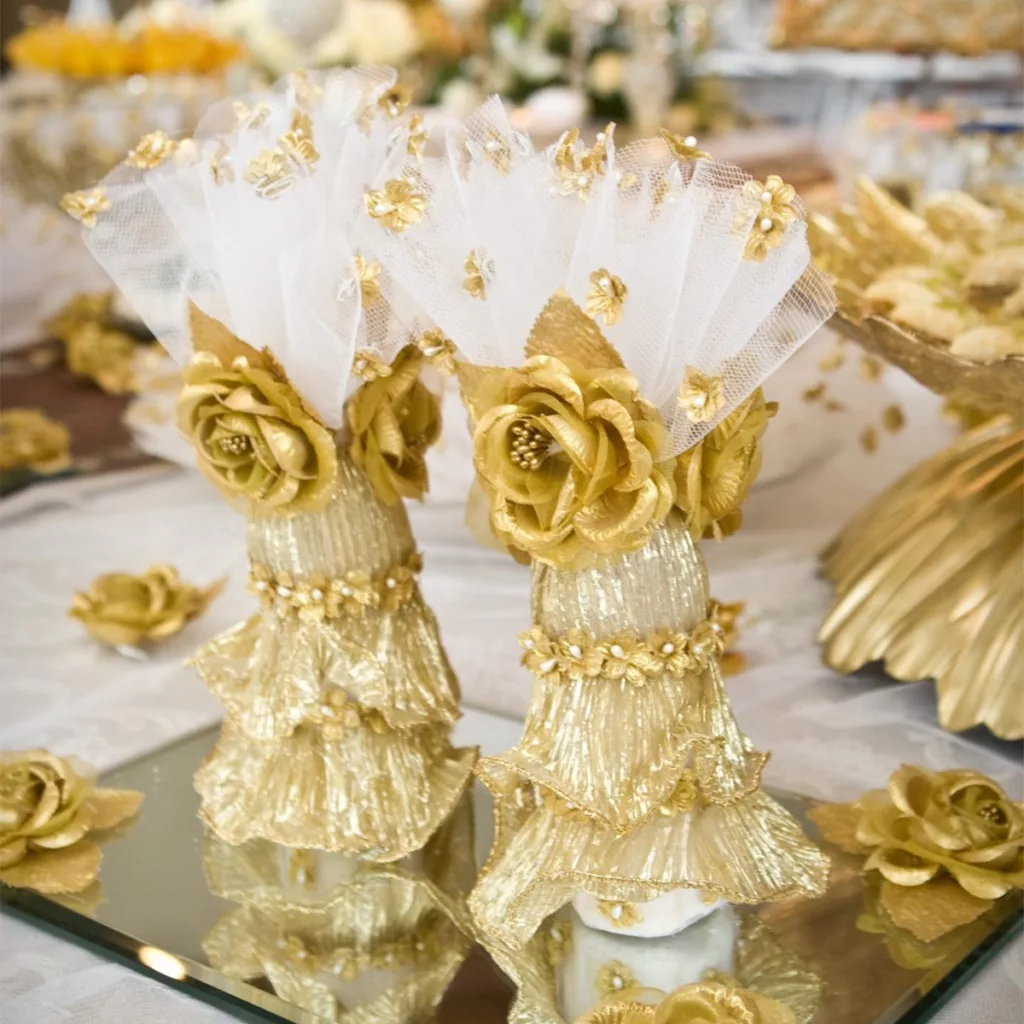
In one of the most photogenic and beloved of Persian wedding traditions, two sugar cones, or Kalleh Ghand, are rubbed together and sprinkled over the couple by the wedding guests. This is said to make the union even sweeter, invoking good energy from the guests who are already happily married. The sugary storm is collected by the Ghand cloth, another item included in the spread, which is made of elegant fabric and is held above the couple’s heads throughout the ceremony. As one of the most interactive parts of the Sofreh Aghd, this is also one of the most memorable.
Wild Rue
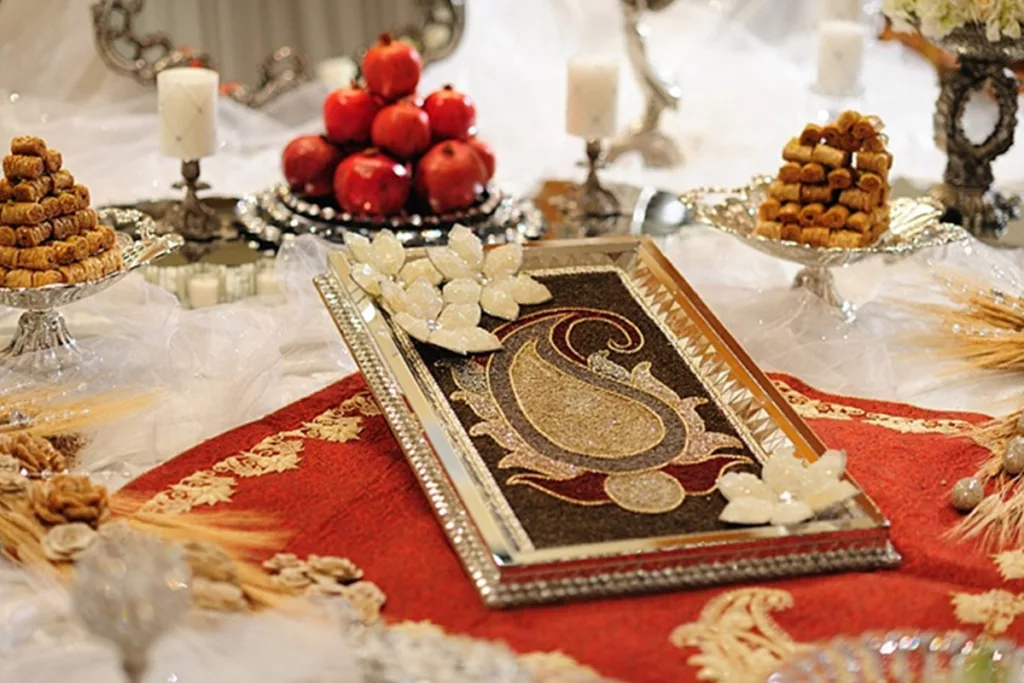
No one wants to start their marriage off with bad energy, right? The
The Termeh
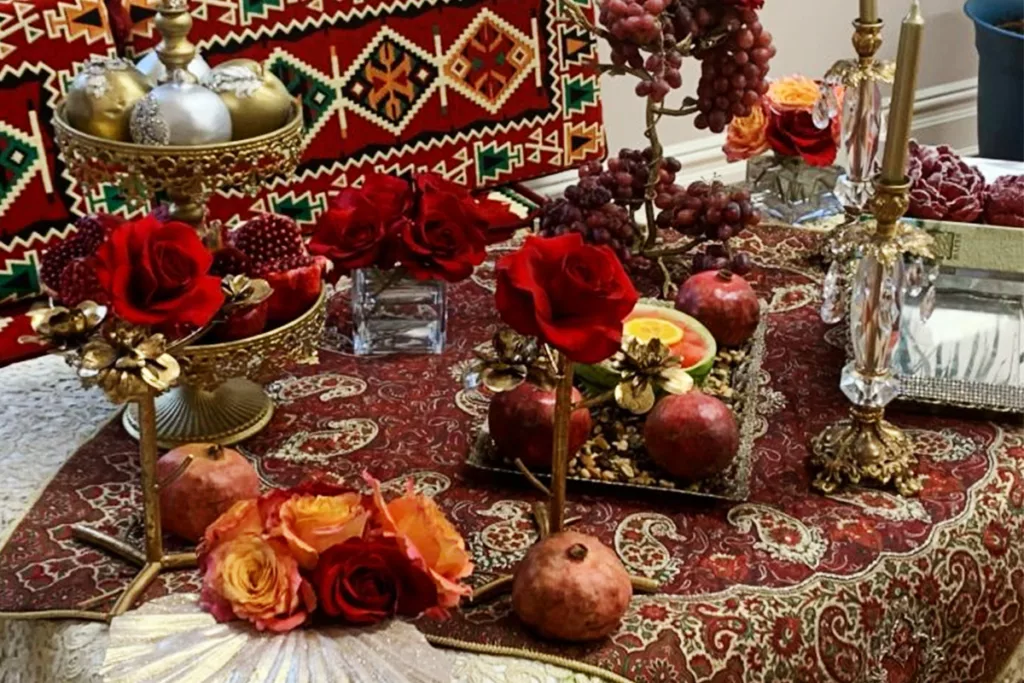
An embroidered wool or silk cloth that is deeply traditional, the Termeh is a gorgeous, colorful, and meaningful addition to the Sofreh Aghd spread. Termehs are typically passed down in families from generation to generation and is generally used as a prayer rug. Because of this, it is included in the Sofreh Aghd as a reminder to the
The Sacred Book
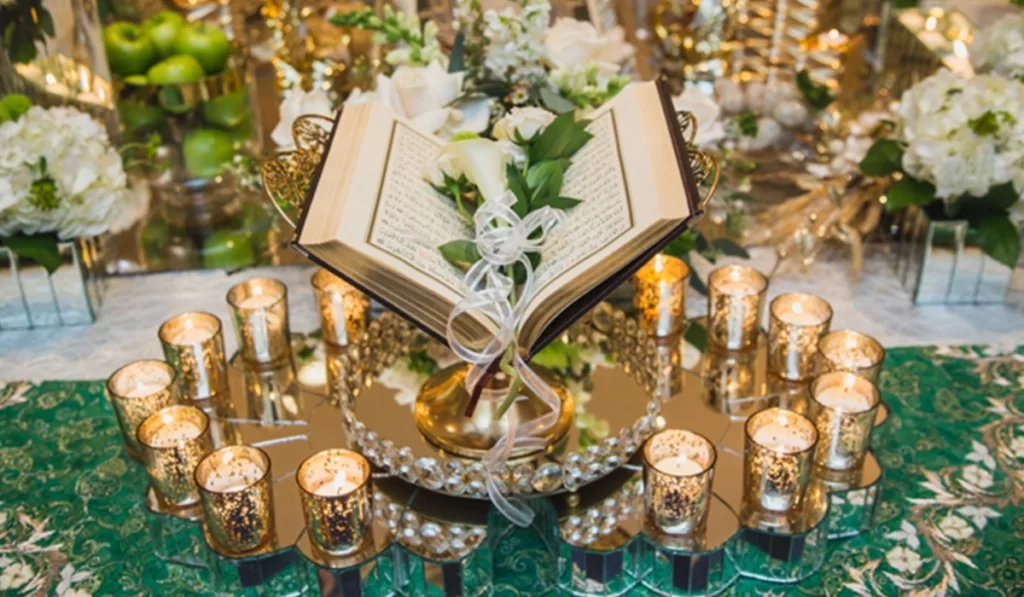
The Scared book holds a special place in the Sofreh Aghd. This book lies open on the table and later is usually held by the couple themselves. It can be either the holy book of the couple’s religion or a book of Persian poetry. This is usually the first item purchased for the Sofreh Aghd table.
Rosewater
Rosewater is often part of the Sofreh Aghd to create a lovely smell, and is very appropriate, as it was first developed in Persia.
Eggs
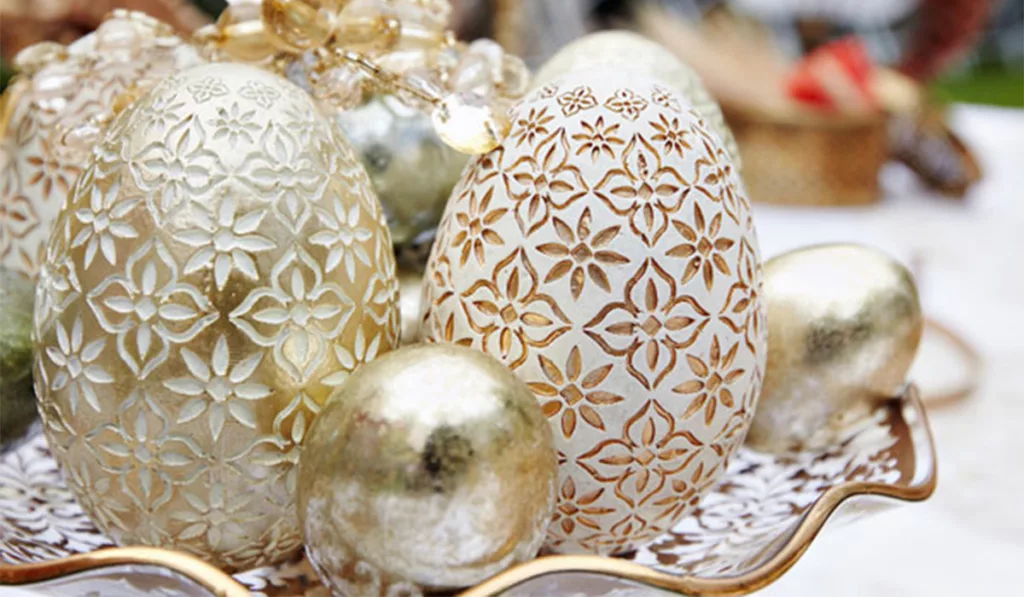
A long-standing symbol of fertility, eggs are included on the Sofreh Aghd to bring about many happy, healthy children for the couple to carry on their lineage. These aren’t just any eggs, either. They are intricately decorated, often including historical designs and calligraphy.
Flowers
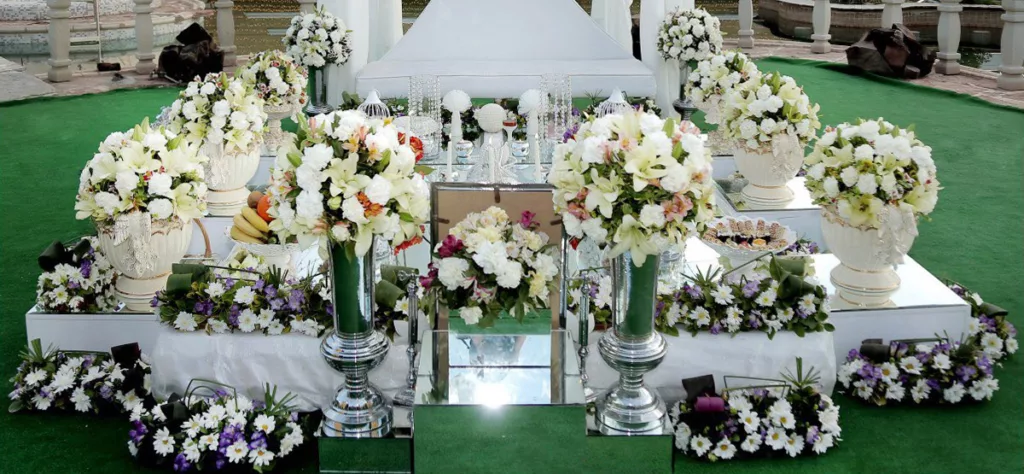
What’s a wedding without flowers? Almost every Sofreh Aghd includes some sort of flower which is chosen to represent the couple as closely as possible. Traditionally, the flowers are placed on either side of the mirror to represent a harmonious union.
Gold Coins
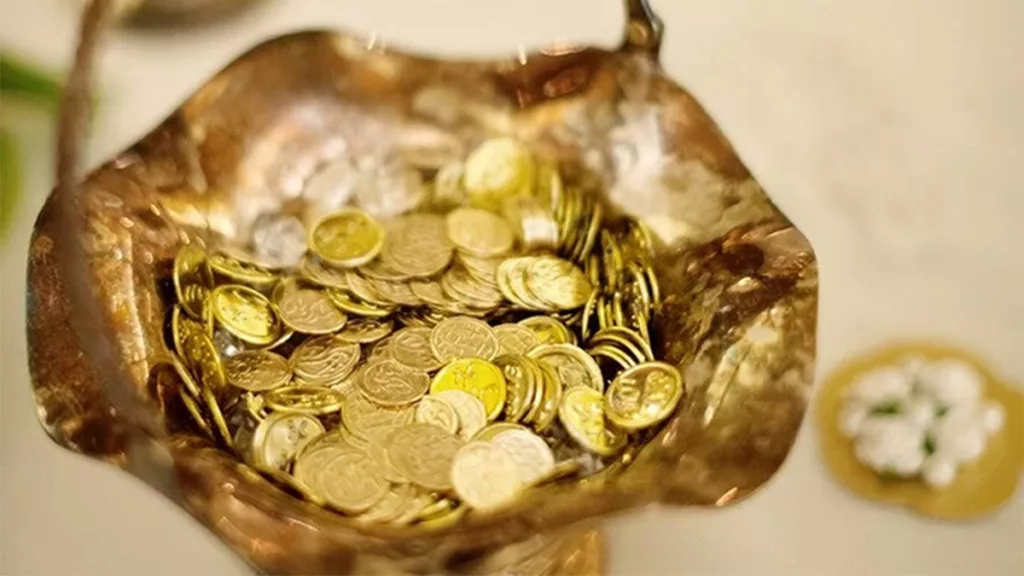
After the ceremony, the gold coins on the Sofreh Aghd are traditionally put inside a pouch, sewn shut, and then taken home by the couple, never to be opened again. This is meant as a wish that the couple will always have more than enough money, and the coins are never meant to be spent, but rather stay within the home as a symbol of prosperity and abundance. Keeping the pouch close within the home will be a demonstration of refraining from greed.
Fruit
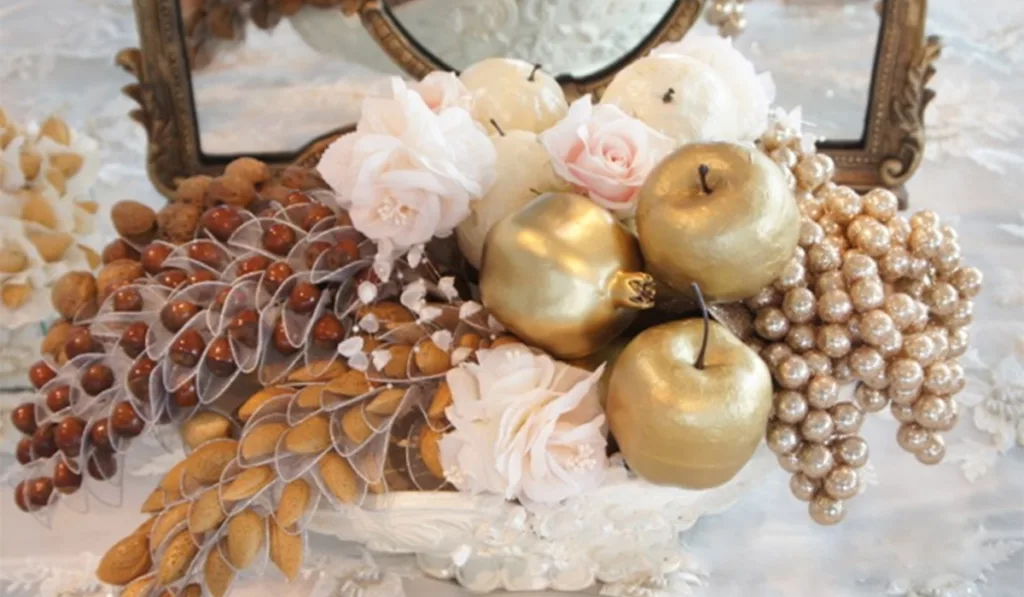
Fruit is a staple item on the Sofreh, as they symbolize good health. Typically pomegranates, apples, and grapes are selected, but the fruit can be anything the couple chooses. It is often presented in very creative ways, with complex arrangements and designs.
The Candelabra
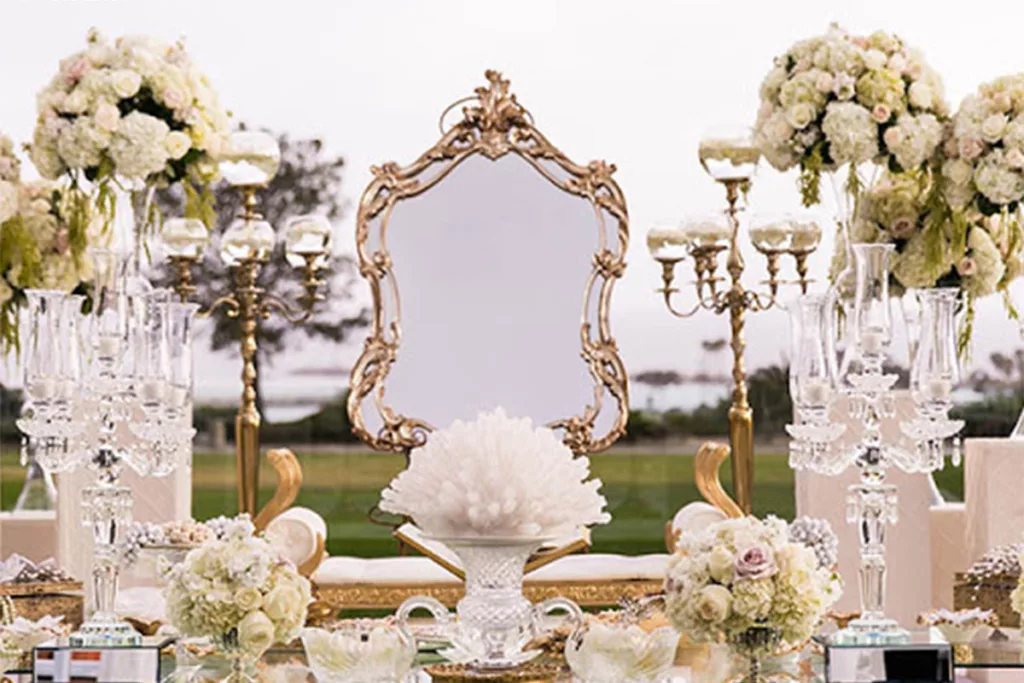
The Candelabra, or Shamdoon, symbolizes light—just like the mirror. However, it also represents fire, a purifying source which brings forth illumination, endurance, and eternality. There are always only two candelabras on the Sofreh.
Bread, Cheese, And Herbs
Traditionally served to guests at the conclusion of the ceremony, Naan-o-Paneer-o-Sabzi is a trio of bread, cheese, and herbs arranged beautifully, with the symbolism of happy times shared among friends and family. It is thought to bring good luck, as well as represent purity, community, and good health.
Nuts and Sweets
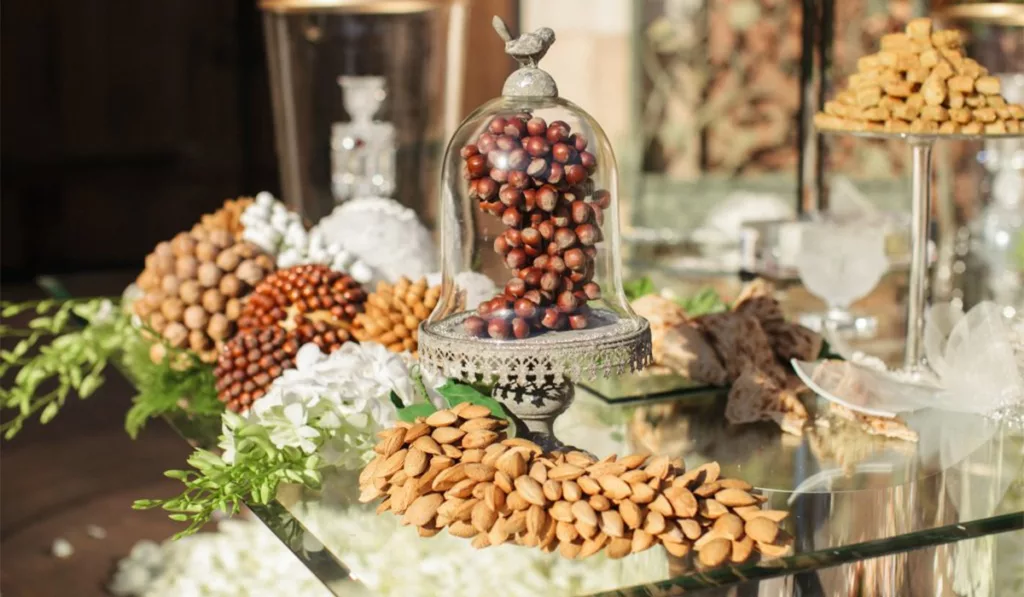
Every type of nut is welcome on the Sofreh Aghd. Whether it’s hazelnuts, almonds, walnuts, plain, salted sweet, whatever!, nuts are a common and much-enjoyed part of the spread. They are said to represent abundance and renewal, as well as fertility. Sweets such as baklava, chocolate, pastries, candy, and nougat are also included on a traditional Sofreh, as they are distributed to the guests once the ceremony has drawn to a close. Particular favorites are Noghl (sugar-coated almonds), and Nabaat (rock candy).
After this meaningful, symbolically rich ceremony, the couple are pronounced husband and wife, they kiss one another, and they exchange rings.
At this point comes the honey exchange, and after this, the sweets and Naan-o-Paneer-o-Sabzi are then shared with the couple’s guests. The legal papers are then signed, and it’s time for the wedding reception! Similar to Western traditional weddings, not everyone attends the Sofreh Aghd ceremony (equivalent to the church ceremony). It is mostly attended by closer family and friends.
Persian weddings are known for their luxury, so of course, the Sofreh Aghd is always a focus of stunning detail and beauty. A typical setting for such a dazzling wedding ceremony is a banquet hall, like Imperial Event Venue.
Raghseh Chaghoo: The Persian Knife Dance
One of our favorite traditions after the Sofreh Aghd ceremony is the knife dance, or Raghseh Chaghoo. This dance typically takes place before cutting the cake, which makes sense as its purpose is for the couple to obtain the knife in order to cut the cake!
This tradition starts off with a guest performing a Persian
Eventually the knife will be given to the newlyweds to use for cutting the cake.
Flower Petal Toss
While all the guests are celebrating and dancing, there comes a moment during the wedding reception where guests will shower the newlywed couple with flower petals.
Typically guests will tear handfuls of petals from the table centerpieces and head to the dance floor, tossing the petals all over the couple.
The flower petal toss most commonly occurs during a famous song called “Aroosi”. This song has become popular over the years and has been recorded by many artists over the years.
There is a specific set of lyrics in the song that literally says, “Toss flowers on the bride and groom.” The tossing of the flower petals signifies health and wealth for the newlywed couple and the journey in life that they are taking together.
Persian Wedding Food
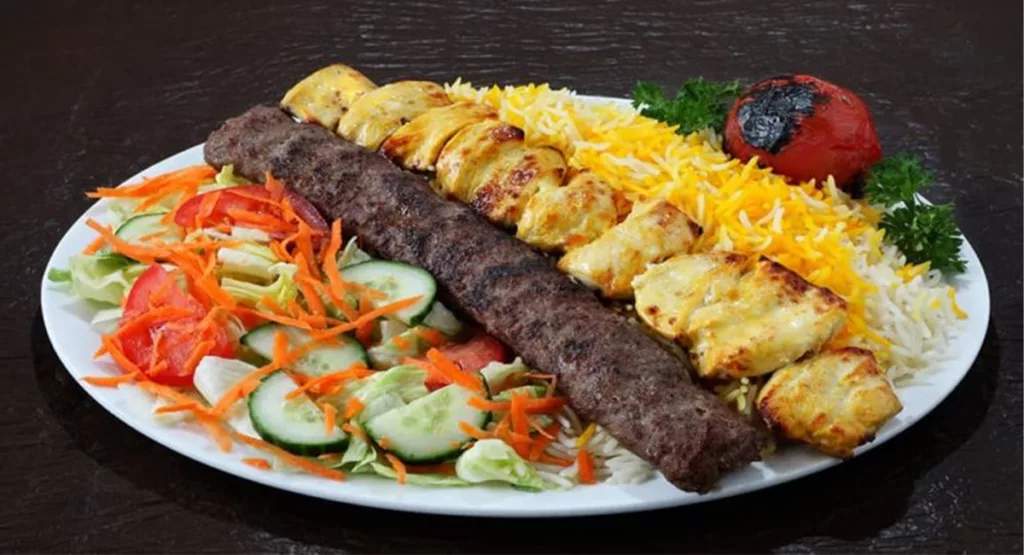
Now onto perhaps our favorite part, Persian wedding food! Historically, Persian food is considered to be very rich and expensive because of the herbs and spices used in them, as well as the length of time a typical meal takes to make.
At a Persian wedding, you will typically see an assortment of kabobs—everything from beef to chicken to lamb. It is usually eaten with rice and bread.
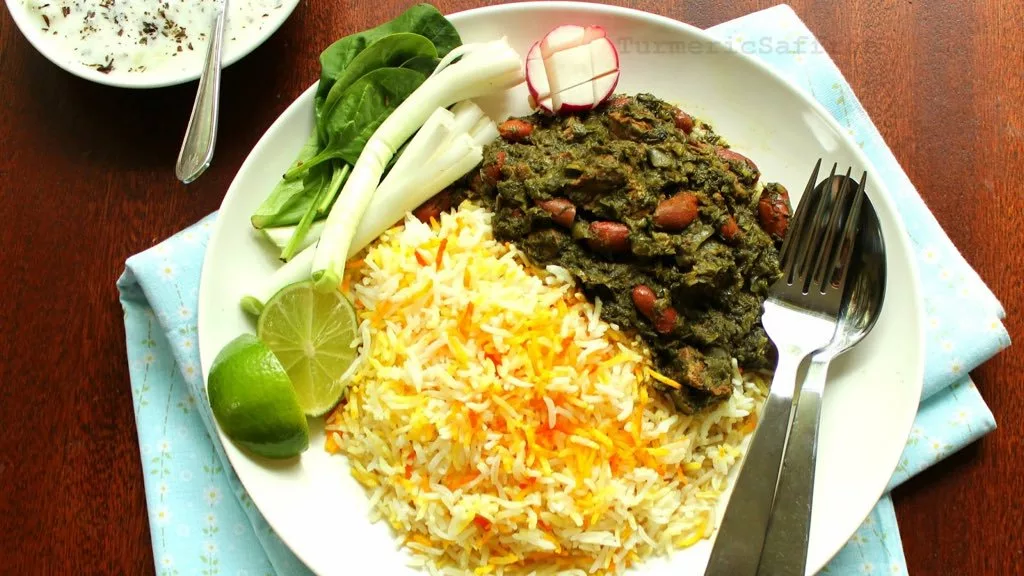
It’s also common to see a variety of rich and delicious stews served at a Persian wedding, including one of the tastiest dishes,
One dish that is a must-have at a Persian wedding is sweet rice called
Conclusion
There you have it! Hopefully now you have a better idea of what to expect when attending your next (or first) Persian wedding! You can expect plenty of dancing, hugging, singing, and incredible food! While Persian weddings may have adopted several western customs, overall they still hold on to older traditions as well.